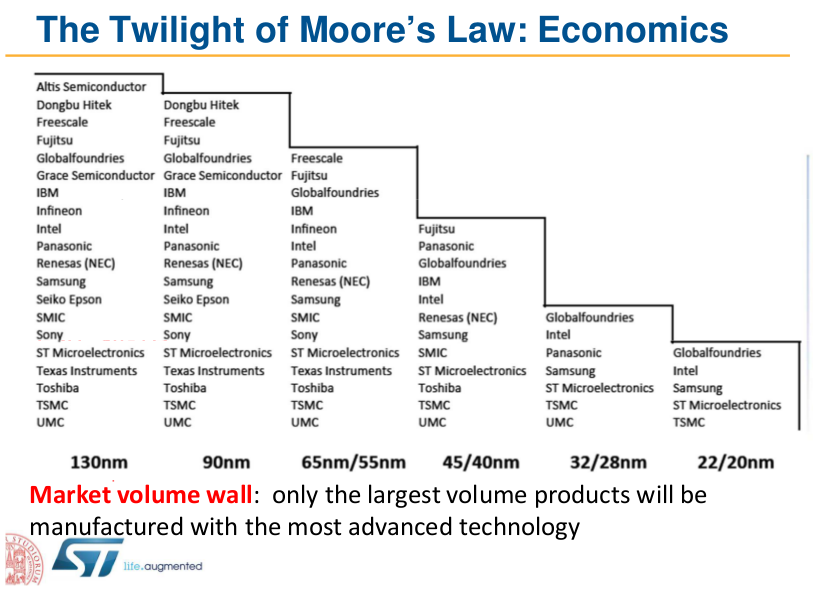This is part 3 of 4 in our continuation of The Maker of Moore’s Law series. (read part 1 here, or part 2 here)

source: wikipedia.org
With falling consumer prices in the cost to produce the same amount of computing power, the cost to produce the new technologies continues to grow exponentially. Considered the economic flip side to his first law, this is known as Moore’s second law, also called Rock’s law. Specifically, this law states that the cost of a semiconductor chip fabrication plant will double every four years. Currently, it will cost around $15B to create a new plant today.

source: st.com
Ironically, the past 20 years of software development haven’t always resulted in higher-performing applications. If you take a word processor from an early generation and compare it with today’s software, you won’t necessarily notice a big difference in performance. This phenomenon is referred to as Wirth’s law, or The Great Moore’s Law Compensator. It explains that the ability for software to increase in size and complexity will offset the performance gains of new technology. Also known as bloat. Randall C. Kennedy, a former employee of Intel, cites versions of Microsoft Office as his key in point: Office 2007 actually performed at half the speed of Office 2000 (on their respective hardware).
Despite the creative genius required to combine these fields into a new technology, Gordon knew that the high-scale production would soon become the largest barrier. In 1968, Moore and Noyce (the original director of Fairchild) to found Intel Corporation, dedicated to merging theory and practice in producing computer chips. He inspired scientists and engineers to work together towards a goal of producing magnetic oxide semiconductor memory chips on a large scale. In short time, this became Intel’s very first huge success.

